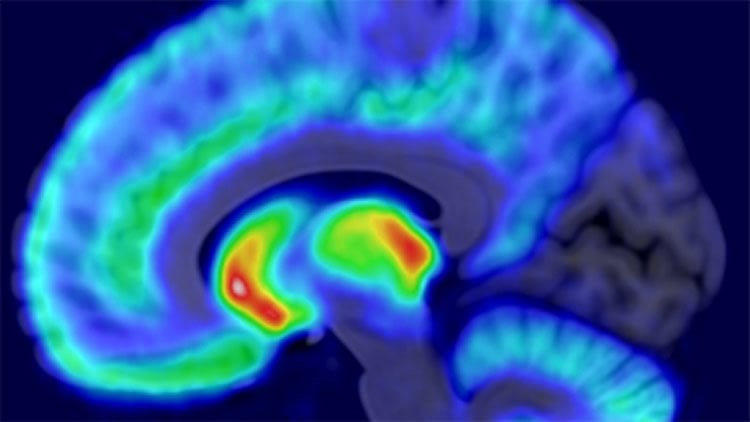Summary: Study reveals how the brain’s opioid system modulates response to others in pain.
Source: University of Turku.
A new Finnish research reveals how brain’s opioids modulate responses towards other people’s pain.
Recent results obtained by researchers from Turku PET Centre and Aalto University have revealed how the human brain’s opioid system modulates responses to other people’s pain.
Seeing others experiencing pain activated brain circuits that are known to support actual first-hand experience of pain. The less opioid receptors the participants had in their brain, the stronger were their emotion and pain circuits’ response to seeing others in distress. Similar association was not found for the dopamine system despite its known importance in pain management.
“Capacity for vicarious experiences is a fundamental aspect of human social behaviour. Our results demonstrate the importance of the endogenous opioid system in helping us to relate with others’ feelings. Interindividual differences in the opioid system could explain why some individuals react more strongly than others to someone else’s distress,” says Researcher Tomi Karjalainen from Turku PET Centre.
“The results show that first-hand and vicarious pain experiences are supported by the same neurotransmitter system. This finding could explain why seeing others in pain often feels unpleasant. High opioid-receptor availability may, however, protect against excessive distress resulting from negative social signals, such as other people’s distress. Our findings thus suggest that the brain’s opioid system could constitute an important social resiliency factor”, says Professor Lauri Nummenmaa from Turku PET Centre and Department of Psychology at the University of Turku.

The study was conducted by using positron emission tomography (PET) and functional magnetic resonance imaging (fMRI). The participants were injected with radioactive compounds that bind to their brain’s opioid and dopamine receptors. Radioactivity in the brain was measured twice with the PET camera to map the distribution of opioid and dopamine receptors. Subsequently, the participants’ brain activity was measured with fMRI while they viewed videos depicting humans in various painful and painless situations.
Funding: The research was funded by the Academy of Finland and the European Research Council
Source: University of Turku
Image Source: NeuroscienceNews.com image is adapted from the University of Turku news release.
Original Research: Full open access research for “Dissociable Roles of Cerebral μ-Opioid and Type 2 Dopamine Receptors in Vicarious Pain: A Combined PET–fMRI Study ” by Tomi Karjalainen, Henry K. Karlsson, Juha M. Lahnakoski, Enrico Glerean, Pirjo Nuutila, Iiro P. Jääskeläinen, Riitta Hari, Mikko Sams, and Lauri Nummenmaa in Cerebral Cortex. Published online May 24 2017 doi:10.1093/cercor/bhx129
[cbtabs][cbtab title=”MLA”]University of Turku “Brain Opioids Help Us To Relate To Others.” NeuroscienceNews. NeuroscienceNews, 30 May 2017.
<https://neurosciencenews.com/opioid-system-relationships-6793/>.[/cbtab][cbtab title=”APA”]University of Turku (2017, May 30). Brain Opioids Help Us To Relate To Others. NeuroscienceNew. Retrieved May 30, 2017 from https://neurosciencenews.com/opioid-system-relationships-6793/[/cbtab][cbtab title=”Chicago”]University of Turku “Brain Opioids Help Us To Relate To Others.” https://neurosciencenews.com/opioid-system-relationships-6793/ (accessed May 30, 2017).[/cbtab][/cbtabs]
Abstract
Dissociable Roles of Cerebral μ-Opioid and Type 2 Dopamine Receptors in Vicarious Pain: A Combined PET–fMRI Study
Neuroimaging studies have shown that seeing others in pain activates brain regions that are involved in first-hand pain, suggesting that shared neuromolecular pathways support processing of first-hand and vicarious pain. We tested whether the dopamine and opioid neurotransmitter systems involved in nociceptive processing also contribute to vicarious pain experience. We used in vivo positron emission tomography to quantify type 2 dopamine and μ-opioid receptor (D2R and MOR, respectively) availabilities in brains of 35 subjects. During functional magnetic resonance imaging, the subjects watched short movie clips depicting persons in painful and painless situations. Painful scenes activated pain-responsive brain regions including anterior insulae, thalamus and secondary somatosensory cortices, as well as posterior superior temporal sulci. MOR availability correlated negatively with the haemodynamic responses during painful scenes in anterior and posterior insulae, thalamus, secondary and primary somatosensory cortices, primary motor cortex, and superior temporal sulci. MOR availability correlated positively with orbitofrontal haemodynamic responses during painful scenes. D2R availability was not correlated with the haemodynamic responses in any brain region. These results suggest that the opioid system contributes to neural processing of vicarious pain, and that interindividual differences in opioidergic system could explain why some individuals react more strongly than others to seeing pain.
“Dissociable Roles of Cerebral μ-Opioid and Type 2 Dopamine Receptors in Vicarious Pain: A Combined PET–fMRI Study ” by Tomi Karjalainen, Henry K. Karlsson, Juha M. Lahnakoski, Enrico Glerean, Pirjo Nuutila, Iiro P. Jääskeläinen, Riitta Hari, Mikko Sams, and Lauri Nummenmaa in Cerebral Cortex. Published online May 24 2017 doi:10.1093/cercor/bhx129






